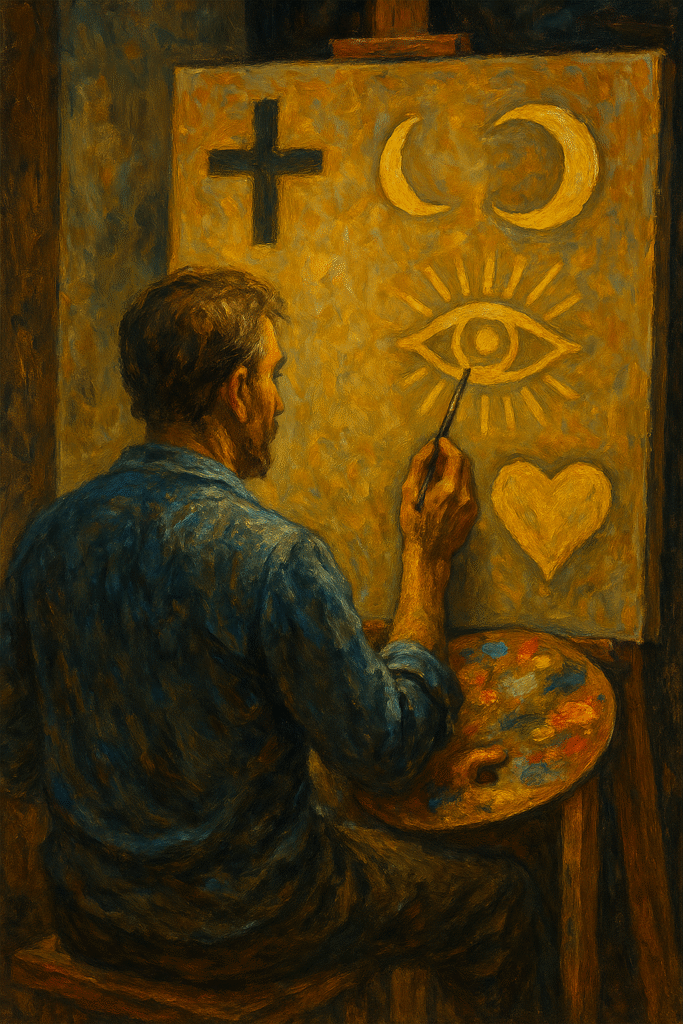Introduction to Symbolism in Art
Symbolism is an age-old element of artistic expression that serves to deepen the viewer’s engagement with a work, adding layers of meaning that transcend the surface. Artists often utilize symbols as a method of communication; they craft visual language imbued with private significance that resonates with personal, cultural, or spiritual themes. The use of symbols in art becomes particularly significant in masterpieces which, through careful analysis, reveal not only the artist’s intent but also a broader spectrum of historical and psychological contexts.
In a world where visual culture is omnipresent, the challenge remains: how can we decode these symbols to appreciate the artistic mastery fully? This article attempts to explore the multi-faceted significance of hidden symbols within artistic masterpieces, addressing why artists employ them, understanding their historical roots, reflecting on psychological implications, and illustrating through case studies.
Historical Context of Symbolism in Art
Art has historically served as a vessel of cultural expression, with symbolism evolving through various movements. In ancient times, symbols were often connected to religious and mythological themes, serving as a means for artists to communicate divine truths or moral stories. These early symbols laid the groundwork for later artistic movements, including the Renaissance, Baroque, and Symbolism, where representation evolved into abstraction and complex allegories.
- Renaissance Period: This era marked the rebirth of classical ideas, and symbols were frequently used to depict both religious and philosophical concepts. Artists like Leonardo da Vinci employed hidden symbols in their works to explore complex ideas, such as the duality of humanity and divine insight.
- Baroque Art: In this movement, artists such as Caravaggio used light and shadow not only for dramatic effect but also to symbolize purity and corruption, engaging the viewer in a deeper moral questioning.
- Symbolism Movement (Late 19th Century): The Symbolism movement in the arts took a more introspective approach, focusing on the emotional and the unconscious. Artists began to use symbols not only to represent concepts but also to evoke feelings and suggest deeper truths.
Each of these movements demonstrates the progression of symbolic use in art and how artists have leveraged symbols to communicate more profound meanings beyond mere aesthetic value.
Psychological Implications of Symbols in Artistic Interpretation
The psychological dimension of symbols in art opens another layer for understanding. According to Carl Jung’s theories on the collective unconscious, symbols resonate on a deeper cognitive level, stimulating audiences’ innate connections to universal themes such as love, death, and spirituality. When encountering art laden with symbolism, viewers’ subconscious minds might engage differently than when viewing more straightforward representations.
Depth of Interpretation
Understanding hidden symbols invites viewers into a dialogue with the artwork. For example, Van Gogh’s Starry Night features swirling stars and a cypress tree, symbols often interpreted as a tussle between life (the town) and death (the cypress, representing mourning). Engaging with these symbols can bring personal interpretations, evoking memories or feelings specific to the viewer’s personal psyche and history.
Moreover, research in art therapy supports the psychological implications of symbols in art. Art can serve as a therapeutic vehicle that helps unveil inner conflicts or emotional states, demonstrating the importance of understanding a work’s symbols not just for academic purposes but also for personal growth and introspection.
Case Studies of Specific Masterpieces and Their Symbols
To illustrate the significance of hidden symbols, this article will analyze a selection of renowned masterpieces and the symbols embedded within them.
1. Leonardo da Vinci’s The Last Supper
In The Last Supper, da Vinci orchestrates complex symbolism through the placement of figures. The different gestures and facial expressions of the apostles symbolize various responses to Christ’s announcement of betrayal. For instance, Judas Iscariot, the betrayer, is portrayed leaning into shadow, representing moral ambiguity and treachery. The use of chiaroscuro enhances the symbolic meanings of light and darkness within human ethics, prompting viewers to reflect on their own moral dimensions.
2. Salvador Dalí’s The Persistence of Memory
Dalí’s painting, characterized by melting clocks, is rife with symbols representing the fluidity of time and the relativity of existence. The distorted clocks speak to the surrealist notion that time is not linear but a malleable construct, challenging viewers to ponder their perceptions of reality. Dalí’s use of hyper-realism juxtaposed with bizarre symbols compels an emotional inquiry into how one perceives time and life itself.
3. Grant Wood’s American Gothic
In American Gothic, the somber expressions of the farmer and his daughter convey cultural symbols of America during the Great Depression. The pitchfork serves as a symbol of hard work and agrarian life, contrasting sharply with the characters’ expressions of austerity, evoking themes of resilience and hardship. This masterpiece reflects societal values and historical context, demonstrating how symbols can encapsulate a time and place.
4. Pablo Picasso’s Guernica
Picasso’s mural responds to the bombings during the Spanish Civil War and is laden with political symbolism. The horse symbolizes suffering, the bull is a representation of Spain, and the flame emanating from the woman’s candle suggests hope amid genocide. Understanding these symbols enhances the viewer’s experience, prompting consideration of the impact of war and the human condition.
Conclusion: The Impact of Understanding Symbols on Viewer Experience
The relevance of symbols in art cannot be overstated. As audiences learn to decode these symbols through historical, psychological, and contextual lenses, their viewing experience evolves into a richer interaction with the artwork. Masterpieces that seem simple at first glance are revealed as complex dialogues between the artist and the viewer, fostering a multi-layered understanding that enriches both appreciation and interpretation.
In understanding why artists use symbols, we recognize that the canvas serves not just as a means of aesthetic pleasure but also as a tapestry upon which broader philosophical and existential questions are woven. The exploration of hidden symbols transforms mere observation into a dialogue, echoing the ancient notion that art is more than a visual experience; it is a bridge to the collective consciousness of humanity.
FAQ Section
Why do artists use symbols?
Artists use symbols as a means of conveying complex ideas, emotions, and cultural messages that resonate with viewers on a deeper level, effectively bridging the gap between personal experience and universal themes.
How do symbols enhance the artwork’s meaning?
Symbols can add layers of interpretation that enrich a viewer’s understanding, turning a piece of art into a multi-dimensional conversation about humanity, society, or personal philosophy.
Can symbols in art change over time?
Yes, symbols can evolve in meaning due to shifts in cultural contexts, societal values, and personal interpretations, allowing artworks to communicate different narratives across generations.
How can one learn to interpret symbols in art?
Studying art history, understanding cultural contexts, and reflecting on personal experiences can significantly enhance one’s ability to interpret symbols in artworks. Engaging with art criticism and scholarly writings can also aid in this learning process.
Are there universally accepted symbols in art?
While some symbols can have universal interpretations, many are context-dependent. Understanding the culture in which the artwork was created is crucial for interpreting symbols accurately.
Is the use of symbols limited to any particular art movement?
No, the use of symbols spans across various art movements and historical periods, from ancient art to contemporary practices, reflecting diverse experiences and interpretations.
Through this exploration, we find that the significance of hidden symbols transcends just being decorative; it embodies the essence of communication, cultural representation, and philosophical inquiry in the realm of artistic masterpieces.


